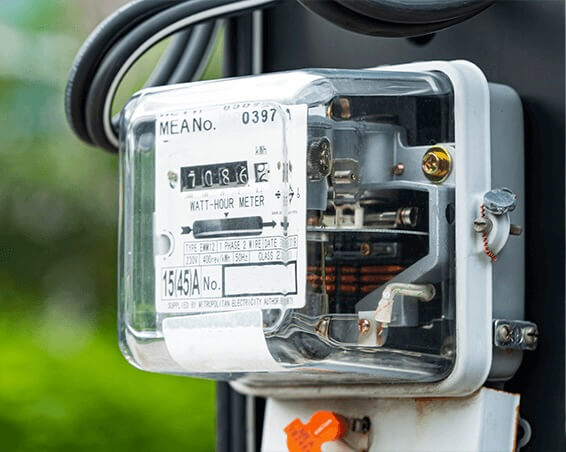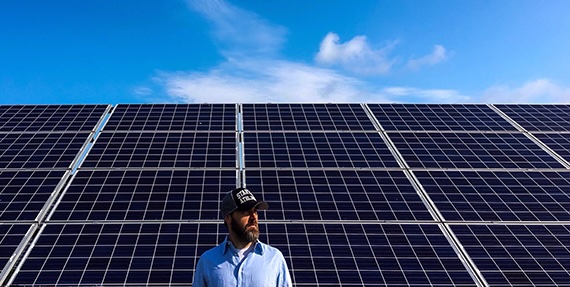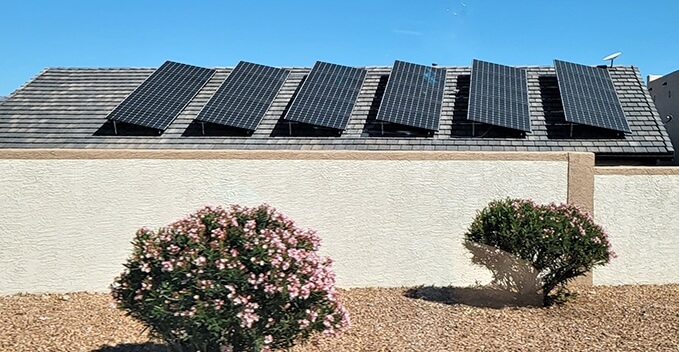Last update January 3rd, 2025 at 04:49 pm
As Australia continues to embrace renewable energy, solar feed-in tariffs (FiTs) have started to reduce in the amount energy retailers pay for solar energy fed back into the electricity grid. Therefore, understanding how FiTs work, the rates offered, and the factors that influence them can significantly impact the financial returns on your solar investment. In this post, we’ll explore what a solar feed-in tariff is and how it affects you.

What Are Solar Feed-in Tariffs?
A solar feed-in tariff is the price an energy retailer pays for solar electricity fed back into the grid from a home solar system. Consequently, this arrangement allows solar panel owners to receive payment for the surplus electricity their systems produce. As a result, it can help offset the costs of installation and maintenance.
How Do Feed-in Tariffs Work Around Australia?
Feed-in tariffs function as a way to pay solar panel owners for the excess energy they contribute to the grid. Here’s a simplified breakdown of how they work:
- Generation: Solar panels generate electricity when exposed to sunlight.
- Consumption: The generated electricity is first used to power whatever appliances may be running the owner’s home or business.
- Export: Surplus electricity flows back into the electricity grid.
- Payment: The solar panel owner receives a payment for the surplus energy supplied to the grid, based on the feed-in tariff rate.

History of Feed-in Tariffs in Australia
South Australia introduced the solar feed-in tariff in 2008 to encourage homeowners to install solar panels. While the initial rate was relatively high, the price of solar panels in 2008 was also much higher than today’s prices. As a result, the solar feed-in rates paid across Australia have decreased in line with the falling cost of solar panel installations.
System Size Limits for Feed-in Tariffs
Each state in Australia has different limits on the size of solar systems eligible for feed-in tariffs. These limits ensure that the feed-in tariff system remains manageable and equitable. For instance, some states cap the maximum system size at 10kW for residential installations, while others allow larger systems but with different rates.
NSW Feed-in Tariffs
NSW once offered a generous feed-in tariff, legislated by the state government, which paid out 60 cents per kilowatt-hour (c/kWh) for all solar energy generated. This scheme ran for seven years and concluded on 31 December 2016. Since then, energy retailers in New South Wales have set the feed-in tariff rates, leading to varying payout amounts. Currently, the average payout is around 4.9 to 6.3 c/kWh. For more details, you can refer to IPART’s all-day feed-in tariff factsheet.

VIC Feed-in Tariffs
Victoria provides a solar feed-in tariff with a minimum flat rate and a time-of-use rate, which reflects the different values of electricity during peak and off-peak times. In the 2024–2025 financial year, the minimum flat rate is 3.3 c/kWh, however, we’ve observed higher pricing in the marketplace. For more information, you can go to the Essential Services Commission.
QLD Feed-in Tariffs
Queensland’s feed-in tariff is split into two areas: South East Queensland (Energex network) and regional Queensland (Ergon network).
In South East Queensland (SEQ), feed-in tariffs for 2025 are set by individual electricity retailers, not regulated by the government. Rates can vary depending on the retailer and their specific offerings. SEQ residents should contact their electricity retailer directly or compare providers to find the best available FiT rate.
For the 2024–2025 financial year, regional Queensland has a regulated feed-in tariff of 12.377 c/kWh, as set by the Queensland Competition Authority (QCA).
You can visit the Queensland Competition Authority for updated information.
SA Feed-in Tariffs
South Australia used to have a generous feed-in tariff which locked in the price at 44 c/kWh up until 2028. This scheme stopped taking new participants back in 2011. Currently, SA has no minimum solar feed-in tariff rate. Electricity retailers set their own rates, so consumers should compare offers to find the best deal. As an example, in December 2024, Energy Australia offered the highest feed-in tariff in South Australia, with a maximum of 12 c/kWh. AGL and Origin Energy follow, providing 10 c/kWh.
WA Feed-in Tariffs
In Perth and the South West region, Synergy provides electricity to solar households, offering a feed-in tariff under the Distributed Energy Buyback Scheme (DEBS).
For the 2024–2025 financial year, exported surplus solar electricity earns the following rates:
- From 3 pm to 9 pm: 10 c/kWh
- From 9 pm to 3 pm: 2 c/kWh
This results in an average rate of under 3c per kWh for most households.
In regional WA, Horizon Power serves as the electricity provider. In larger towns, the DEBS rates are generally the same as in Synergy areas, but remote areas can offer much higher tariffs:
- From 3 pm to 9 pm: 55.99 c/kWh
- From 9 pm to 3 pm: 16.92 c/kWh
For the most current information, it’s recommended to check directly with Horizon Power.

TAS Feed in Tariffs
Tasmania has a regulated solar tariff. In the 2024–2025 financial year, the minimum feed-in tariff rate is 8.935 c/kWh. Electricity retailers can pay more than the minimum so consumers should compare offers to find the best deal.
Solar feed-in tariff information from the Economic Regulator can be found here.
NT Feed-in Tariffs
From 1 July 2024 to 30 June 2025, the standard feed-in tariff rate in NT is set at 9.33 c/kWh.
As of 1 July 2025, Jacana Energy will implement a peak feed-in tariff of 18.66c/kWh for electricity exported to the grid between 3 pm and 9 pm. This increase aims to encourage solar energy export during peak demand hours, potentially reducing grid reliance and enhancing energy reliability. For more information visit Territory Renewable Energy.
To maximise benefits from this tariff, you may consider installing a solar battery system to store excess energy generated during the day for use during peak periods.
ACT Feed-in Tariffs
In the ACT, solar feed-in tariff rates for 2024-2025 are determined by individual energy retailers. On average, these rates range between 7 to 12 c/kWh for surplus solar energy exported to the grid. The ACT Government’s former Solar Bonus Scheme, which offered higher rates, closed to new applicants in 2011. Therefore, new solar system owners typically rely on their electricity retailer’s FiT offers. To maximise the financial benefits of solar energy, it’s important to compare available offers.
Summary
In summary, feed-in tariffs have played a crucial role in the growth of solar energy in Australia. They have evolved over time, reflecting changes in technology, market conditions, and policy goals.
Understanding the specifics of these tariffs and how they vary by state can help individuals and businesses make informed decisions about solar energy investments.